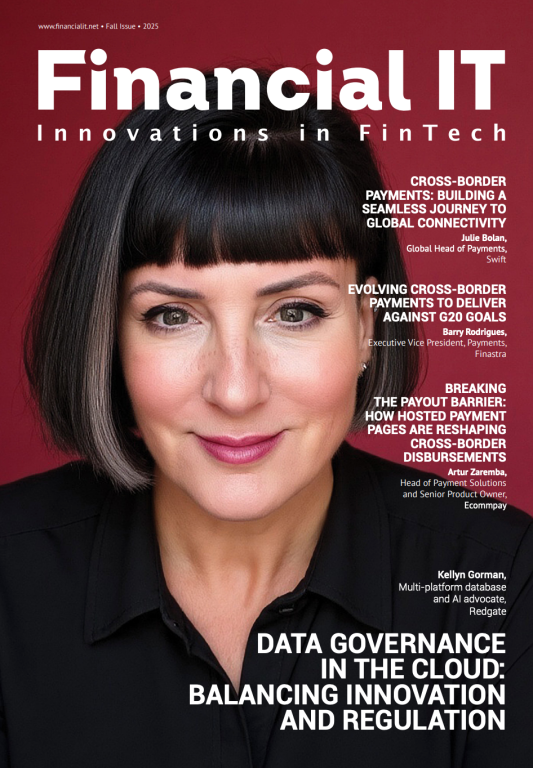The Risk Of Standing Still: Why Banks Must Modernise Gen Systems

- Mark Hankin, Application Modernisation Partner at TXP
- 21.07.2025 09:00 am #BankingModernisation #CoreSystemUpgrade
Gen continues to underpin business-critical systems that many banks use. Developed in the 1980s, the platform was once on the cutting edge of technology. But times have changed. The last 15 years has seen a revolution in computing, with modern, cloud-based systems bringing new architectures and cloud native technologies like Kubernetes, all helping to make application development more flexible and agile. Challenger, cloud-first banks like Monzo, Starling and Revolut, have ridden the wave of this technological shift, enabling them to innovate more rapidly than traditional banks with legacy technology stacks.
Ideally, these more established institutions would simply continue to run their apps on Gen whilst integrating them with cloud environments. But that’s not a simple task, and instead, Gen-based apps need to be modernised, which comes with its own unique set of challenges.
If it isn’t broken, why fix it?
Now considered legacy, Gen still provides a predictable beat at the heart of many financial institutions globally, while simultaneously being viewed as a significant emerging or current risk. This is due to the common issues of inflexibility, diminishing resource pools, increasing costs and slower development cycles.
From a technology perspective, Gen can’t be directly integrated with modern technologies such as cloud, APIs and data analytics, which are the driving force behind many banks’ transformation strategies. The technology gap between Gen and newer solutions widens every day.
In today’s increasingly regulated environment, where new laws like the EU’s DORA place greater emphasis on IT resilience, continuing to rely on legacy technology with diminishing support, such as Gen, can make compliance significantly more difficult.
Specialist Gen skills are in scarce supply. This means that Gen-based apps often take longer to update, are more costly to maintain. This is slowing down the pace of IT development, when banks want to move faster.
The five Rs of Gen modernisation
With Gen embedded in many banks, modernisation can feel like an insurmountable challenge. However, there are five Rs to Gen modernisation that can set banks up for transformation success:
The first R is rehosting, or redeploying an application to another form of infrastructure – whether that be physical, virtual or cloud-based – without modifying its code, features or functions. However, this poses several challenges, including suitability across environments and the differing security standards between the old and new platforms. This option requires extensive strategic planning to ensure these needs – and many more – are met, otherwise the app won’t function.
Instead, banks could refactor applications. This involves regenerating the entire Gen application into maintainable, modern code, meaning applications can be deployed to the cloud, on-premise or hybrid infrastructure of choice. To achieve this, banks must use configurable automation to maintain high levels of quality at scale, which requires deep Gen specialism.
Or banks might consider a revise strategy, whereby application code is optimised to remove technical debt left by Gen. This might seem impossible as Gen-based coding is hard to update at scale. But it’s important to remember that there’s no one-size-fits-all solution. Each organisation’s individual needs and goals must be considered, and transformation should take place incrementally to make the task more achievable and reduce the risk of destroying the functionality of the entire app.
Many Gen-based apps are core to a bank’s operations, so a full scale rebuild whereby the entire app is redesigned from scratch and tailored to a different environment is often seen as the last resort. Banks will need to analyse business rules, workflows and algorithms that sit within the application. Those that are most challenging to rebuild should be isolated, extracted and rewritten in native code, which negates the risk and cost of building entirely new intellectual property.
The final option is to eliminate the Gen-based application and replace it with one that suits the bank’s current needs. This enables an organisation to take control of the modernisation journey, effectively retiring entire Gen-based applications, instead using modern alternatives that increase flexibility and reduce costs.
Moving from Gen to next gen
There’s little doubt that Gen played a key role in helping the banking sector to modernise in the 90s and early 2000s. But to remain competitive in an ever-changing financial market, where new players are entering the fray with fresh, exciting products, Gen modernisation is crucial if banks are to avoid standing still.
Having a strategy that considers both resources and business impact will be essential to successful modernisation, helping banks transition smoothly to today’s IT architectures and accelerate innovation.



















